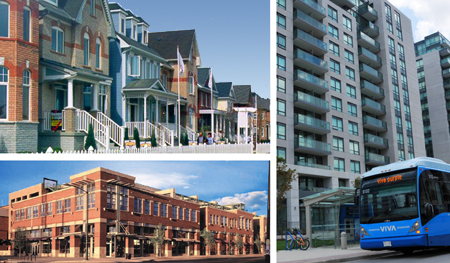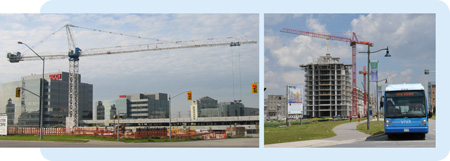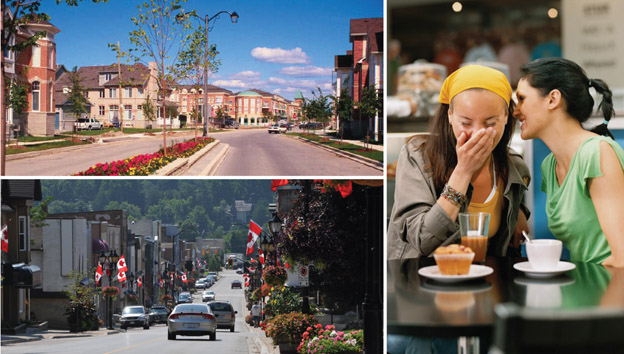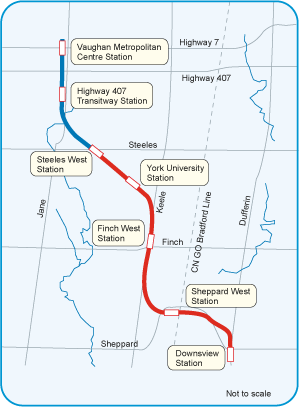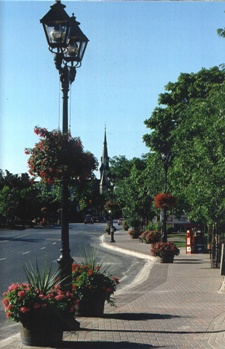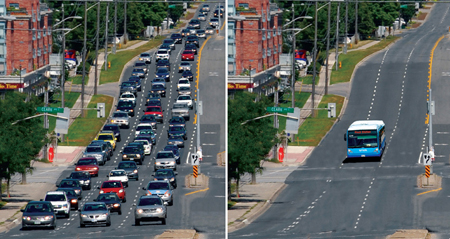
The vivaNext rapidways being built across York Region are good news for the environment. More people taking transit means less pollution. One Viva vehicle can replace up to 70 cars on the road – that represents a huge reduction in carbon emissions. With fewer cars on the road, gridlock, fuel use and air pollution caused by idling cars are all reduced.
There is also a direct connection between how our communities are developed, and the impact we have on our environment. Sprawling communities mean that people tend to travel farther between work, home and play. The more spread out a community is, the harder it is to provide efficient public transit. So, people become increasingly dependent on cars, and the developments that get built are more likely to be car-oriented. The more that happens, the less convenient it is for people to take transit. Eventually, entire communities become dependent on cars, and are less likely to use transit, cycle or walk to get around. More cars mean more gridlock, more pollution and more carbon emissions.
On the other hand, communities that are developed around great transit are more likely to include compact, pedestrian-friendly neighbourhoods. Mixed-use developments and shorter distances between work-live-play destinations make it easier to get around and make transit a more appealing and convenient choice for a greater number of people.
The result: more people out and about, enjoying their energetic and dynamic local neighbourhood, and walking in the fresh air to ride in a comfortable, low-emission Viva vehicle.
And for people who continue to drive, their trips will be shorter due to the compact, mixed-use developments that have sprung up around transit – so once again, car usage will be reduced, resulting in less pollution and fuel consumption.
All of this is good news for the environment, for our health, and for our lifestyle.

